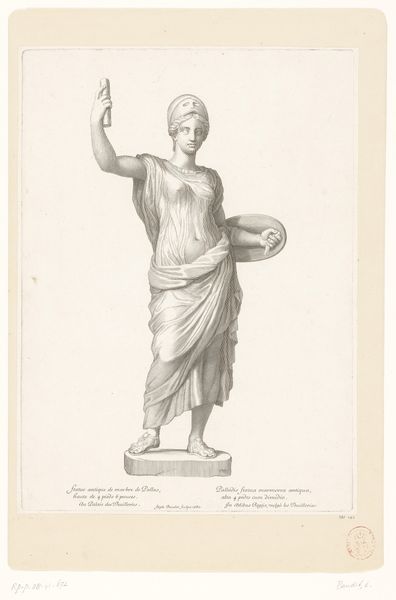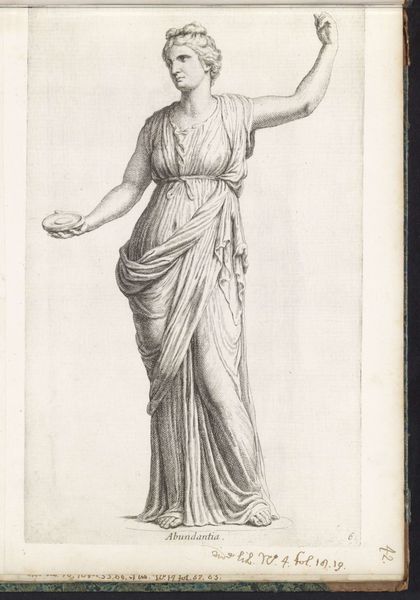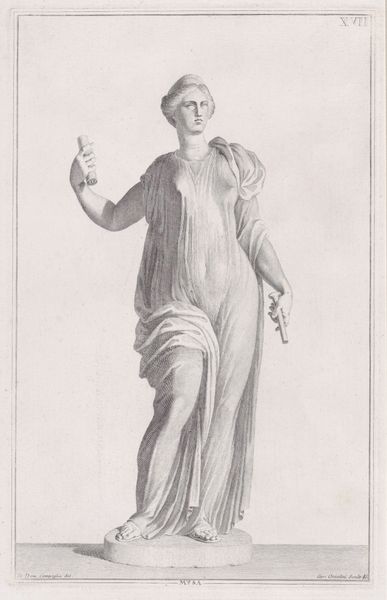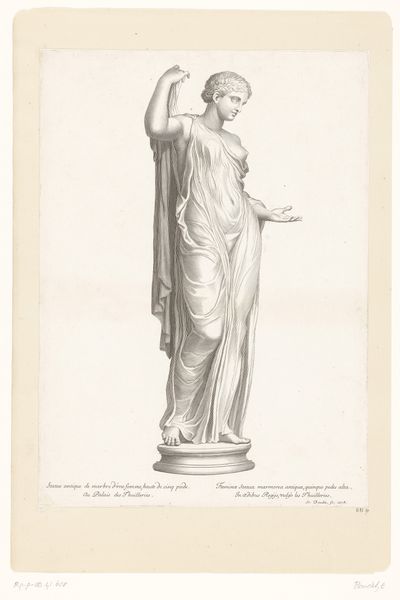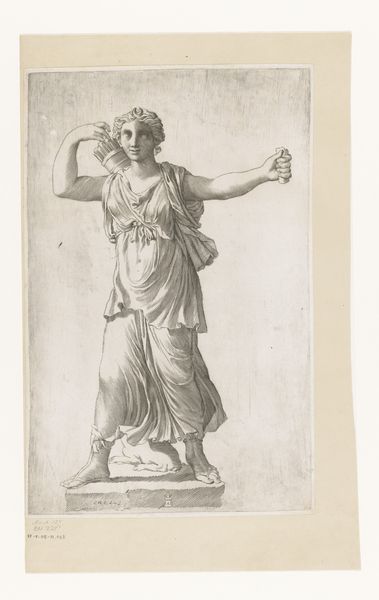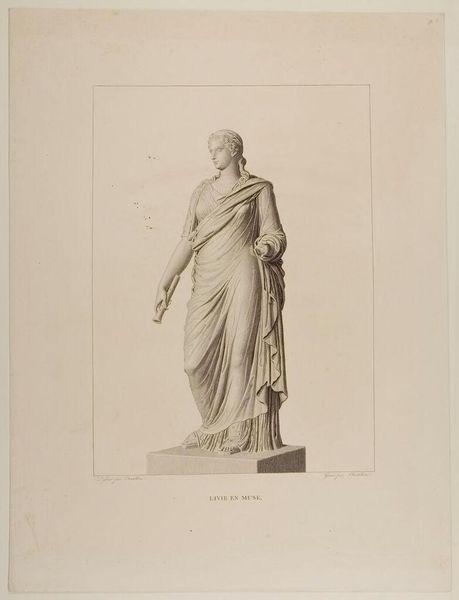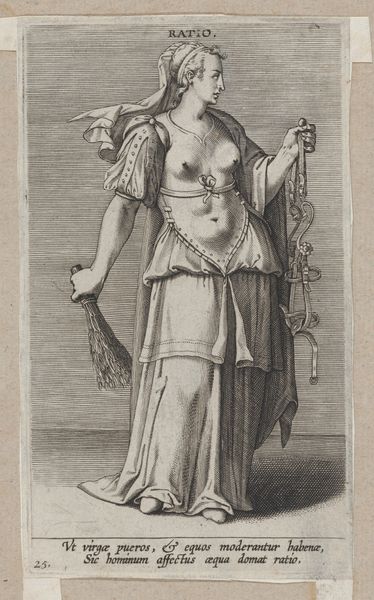
drawing, pencil
#
portrait
#
pencil drawn
#
drawing
#
neoclacissism
#
pencil sketch
#
charcoal drawing
#
figuration
#
pencil drawing
#
pencil
#
portrait drawing
Dimensions: height 467 mm, width 327 mm
Copyright: Rijks Museum: Open Domain
Angelo Bertini created this print of a dancer sometime before his death in 1838, using a technique called lithography. Lithography is a planographic process, meaning that the artist works on a flat surface. In this case, a block of Bavarian limestone was likely used. The image is drawn with a greasy crayon, then treated with acid to fix it in place. When dampened, the stone will repel ink in all areas except where the crayon was applied. The printmaker then applies ink, lays paper on the stone, and runs it through a press. The resulting image has a very particular quality - a soft, velvety texture. You can see how Bertini has used this effect to capture the delicate drapery and graceful pose of the dancer. Lithography allowed for relatively quick and inexpensive reproduction of images, making art more accessible to a wider audience. This print is not just an image of a sculpture but also a testament to the democratizing power of printmaking in the 19th century.
Comments
No comments
Be the first to comment and join the conversation on the ultimate creative platform.
